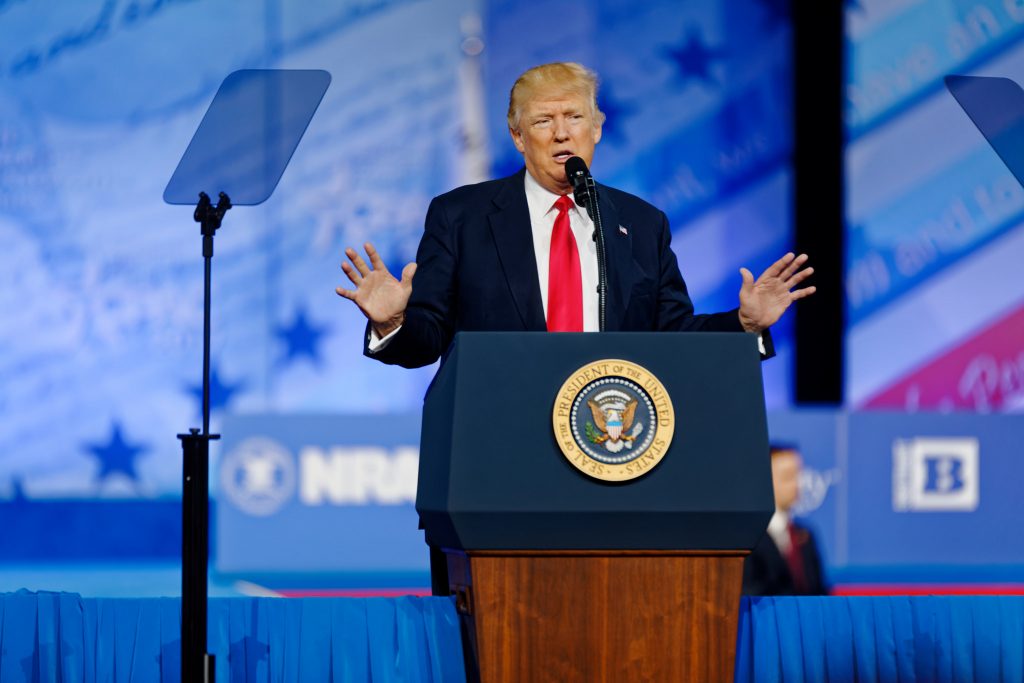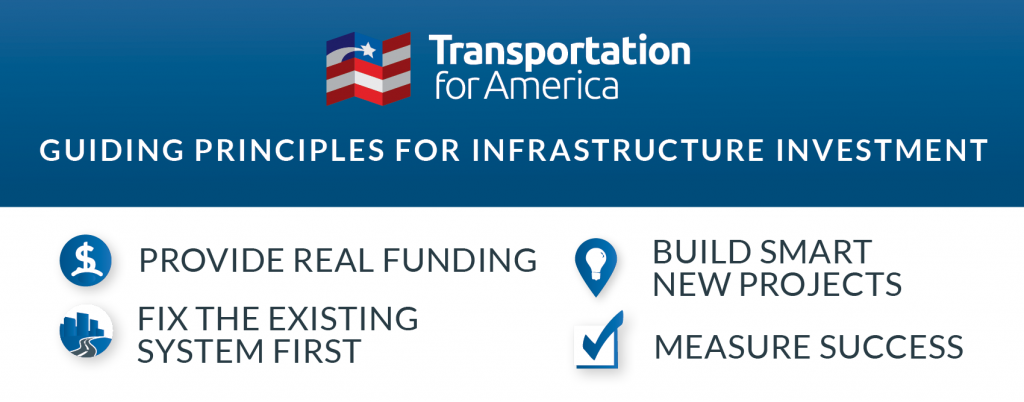
The rapidly disappearing infrastructure promises of 2017

The House-approved tax reform legislation is the most recent evidence that neither the administration nor Congress seems to be very serious about supporting and encouraging infrastructure investment.
On the campaign trail, in his inaugural address and in numerous press conferences and events throughout 2017, President Trump and members of his administration have been promising a much-needed investment in infrastructure. “Crumbling infrastructure will be replaced with new roads, bridges, tunnels, airports, and railways gleaming across our very, very beautiful land,” the President recently said in a statement. After nearly a year of waiting for an infrastructure plan that was always just right around the corner, as we were frequently told, the Trump administration has only managed to release a few broad principles. Numerous congressional leaders have joined the chorus, yet nothing has been accomplished.
In the total absence of a specific infrastructure plan from the administration, we can only look for clues. The most obvious is the President’s budget proposal for 2018 — the priorities of which stand in stark contrast to his stated commitment to rebuilding the nation’s infrastructure, luring more private sector involvement into infrastructure planning and spending, or the early promises to make a $1 trillion investment in infrastructure.
Under the president’s budget for next year:
Overall infrastructure spending would go down. The President’s budget proposal for next year recommends funding the highway and transit formula programs at levels prescribed by the 2015 FAST Act, but capping the Highway Trust Fund in 2019 and 2020 at FY2018 levels, effectively cutting about $2.4 billion in transportation funding already authorized by Congress.
Funding for new transit construction would be slashed…and eventually eliminated. The President’s budget reduces and eventually eliminates another $2.4 billion in annual funding that helps states and cities of all sizes build or expand public transportation systems. Some of these projects already have signed funding agreements from the federal government, matched by local and state dollars committed by voters at ballot boxes.
The only funding that communities can currently tap directly would disappear. The budget also eliminates the $500 million competitive TIGER (Transportation Investments Generating Economic Recovery) program — the only multimodal transportation investment program directly available to local governments. At a time when we should be awarding more dollars to the best possible projects, this budget dumps one of the only programs intended to do so.
Promises have already been scaled back, and are shrinking as we speak. The President’s budget suggests that his infrastructure initiative will have $200 billion in direct federal spending over ten years, far less than the $1 trillion program previously promised by the administration. And after nearly a year, the administration has only offered vague principles for such a package.
The administration has suggested that the massive gap between their original $1 trillion figure and the $200 billion, ten-year plan be filled by increasing and encouraging more private investment in our infrastructure. Yet the House Tax Cuts and Jobs Act — the House’s tax reform proposal, which passed last week with the President’s thumbs up —eliminated private activity bonds, a specific financing mechanism that encourages greater private investment in infrastructure.
Private activity bonds are tax-exempt bonds that fund infrastructure projects with a “private” use of at least 10 percent, and they’ve been used on a wide range of infrastructure projects around the country, including roads, highways, housing, hospitals and airports. Most notably, these bonds have also been instrumental in several public-private partnerships (P3s), including the Purple Line light rail project in Maryland and the Rapid Bridge Replacement Project in Pennsylvania. Encouraging more P3s has been one of the core pillars of the administration’s approach to supporting infrastructure investment.
But to save just $39 billion over ten years, the House did away with these tax-exempt bonds, hindering the ability of state and local governments and private entities to obtain financing and build more complicated infrastructure projects like toll roads and transit and rail stations. This is after the administration’s 2018 budget proposal — harmful in so many other ways — proposed expanding the number of infrastructure projects that could tap private activity bonds as one of their few infrastructure investment proposals. The administration even stated that they “support the expansion of PAB eligibility.”
As we wait for a substantial infrastructure plan from the administration, which will almost certainly not be released until 2018, if at all, last week Transportation for America released its own set of guiding principles to help inform or evaluate any standalone infrastructure bill.


Our four principles place a new emphasis on measuring progress and success, rather than just focusing on how much it all costs. We want real funding for infrastructure, not just ways to borrow money or sell off public assets as a means to pay for projects. We want a real commitment to prioritize fixing our aging infrastructure before building expensive new liabilities. We want new projects to be selected competitively with more local control, spurred by innovation and creativity. And yes, we want to ensure greater accountability so taxpayers understand the benefits they are actually receiving for their billions of dollars.
As Congress works on a tax plan and a 2018 budget, let’s keep infrastructure funding in the forefront and stop advancing short-sighted plans that undermine or circumvent our ability to connect communities, create jobs and secure our economic future.



